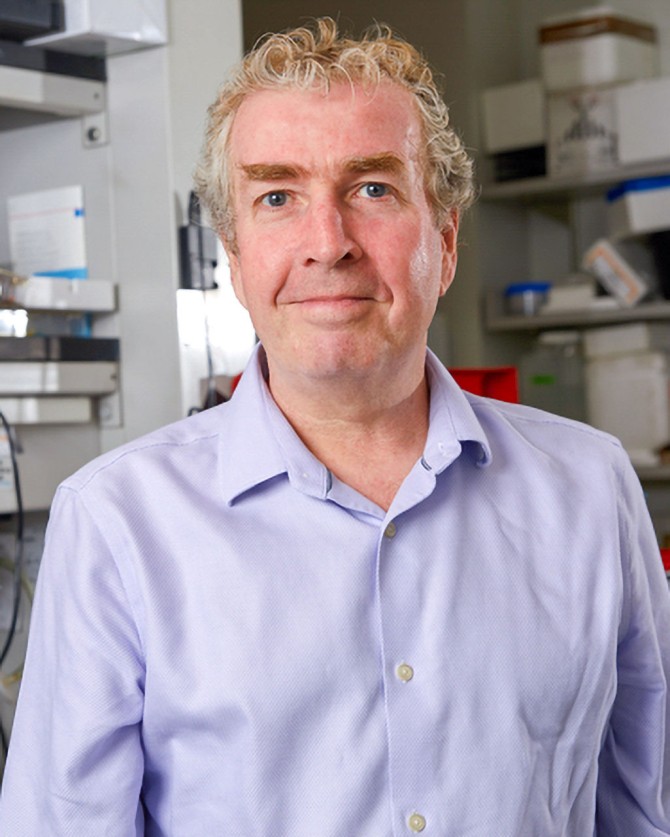Four Cornell professors elected to national academy
By Tom Fleischman, Cornell Chronicle
A professor of global development, a biochemist, a mathematician and a chemist are Cornell’s 2024 electees to the National Academy of Sciences (NAS), the academy announced April 30 at the close of its 161st annual meeting.
The newly elected members are: Mario Herrero, professor and Nancy and Peter Meinig Family Investigator in the Life Sciences, Department of Global Development in the College of Agriculture and Life Sciences (CALS); Timothy Ryan, M.S. ’86, Ph.D. ’89, tri-institutional professor of biochemistry and professor of biochemistry in anesthesiology at Weill Cornell Medicine; Steven Strogatz, the Susan and Barton Winokur Distinguished Professor for the Public Understanding of Science and Mathematics in the College of Arts and Sciences (A&S); and Peter Wolczanski, the George W. and Grace L. Todd Professor in the Department of Chemistry and Chemical Biology (A&S).
The four Cornellians are among 120 members and 24 international members who were elected in recognition of their distinguished and continuing achievements in original research. With the newest elections, there are now 2,617 active members and 537 international NAS members.
Seventy-eight Cornellians have been elected to the academy since inaugural elections in 1863.
Herrero, elected as an international member, is director of Food Systems & Global Change in CALS, and a Cornell Atkinson Scholar. His research focuses on increasing the sustainability of food systems for the benefit of humans and ecosystems. He works in the areas of food systems and the environment; climate mitigation and adaptation; livestock systems; the true cost of food; sustainability metrics; and healthy and sustainable diets.
Herrero received his doctorate in 1998 from the University of Edinburgh, Scotland, and joined the Cornell faculty in 2021. Before arriving at Cornell, Herrero spent eight years as a chief research scientist of Agriculture and Food at the Commonwealth Scientific and Industrial Research Organization, the Australian national science agency. From 1999 to 2013, he was program and project leader at the International Livestock Research Institute, based in Nairobi, Kenya. Herrero is also a Fellow of the Royal Society of Edinburgh.
Ryan, a Howard Hughes Medical Institute Janelia Research Scholar, studies the molecular underpinnings of nerve terminal function in both healthy and diseased states, and develops and deploys quantitative optical tools to study single synapse biology. The lab seeks to understand how nerve terminals, the presynaptic site where neurotransmitter is released, are controlled at the molecular level.
Ryan joined the Weill Cornell Medicine faculty in 1997, was named an Alfred P. Sloan Research Fellow in 1999, and was elected to the American Academy of Arts and Sciences this year. He is a two-time recipient of the McKnight Technological Innovations in Neuroscience Award; a recipient of the NINDS Javits Award; and a recipient of the Siegel Family Award for Outstanding Biomedical Research. He currently serves on the National Institutes of Health’s National Advisory Neurological Disorders and Stroke Council.
Strogatz is an applied mathematician who works in the areas of nonlinear dynamics and complex systems, often on topics inspired by physics, biology, social science and everyday life. He is also passionate about communication: He wrote a weekly column on mathematics for the New York Times in the spring of 2010 and the fall of 2012; his two most recent books, “The Joy of x” (2012) and “Infinite Powers” (2019) are aimed at general readers curious about math; and his podcast for Quanta Magazine, The Joy of Why, takes listeners into some of the biggest unanswered questions in math and science today.
Strogatz received his doctorate from Harvard University in 1986, and joined the Cornell faculty in 1994. He is a fellow of the Society for Industrial and Applied Mathematics (2009), the American Academy of Arts and Sciences (2012), the American Physical Society (2014) and the American Mathematical Society (2016).
Wolczanski studies the syntheses, electronic properties and structures of organometallic and inorganic complexes, toward an understanding of small and large molecule, and their application to catalysis. Current studies emphasize bond activations, metal-metal bonding, and the influence of electronic states on chemical reactivity.
Wolczanski received his doctorate from the California Institute of Technology in 1981, and joined the Cornell faculty that same year. He was named an Alfred P. Sloan Fellow (1987), an American Academy of Arts and Sciences Fellow (1999), and was recipient of the 2011 American Chemical Society Award in Organometallic Chemistry.
Other notable Cornell NAS members include chemist and Nobel laureate Roald Hoffmann (1972), cancer geneticist and Nobel laureate Harold Varmus (1984), physicist J.C. Seamus Davis (2010) and computer scientist Éva Tardos (2013).
Media Contact
Get Cornell news delivered right to your inbox.
Subscribe




